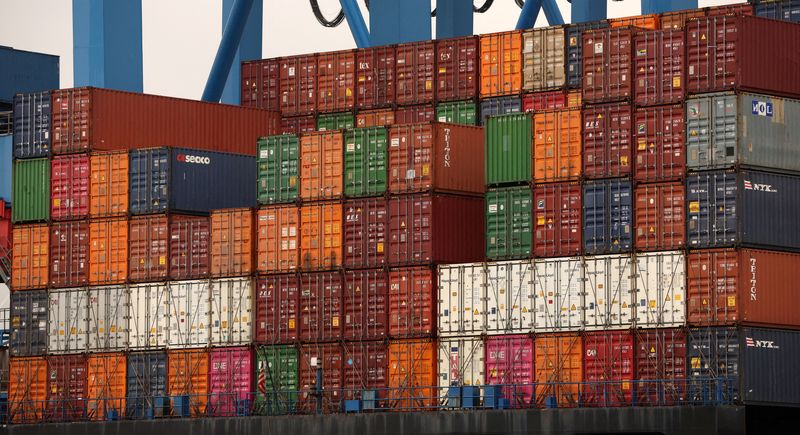BERLIN (Reuters) - German exports and industrial output fell more than expected in September, showing the weakness of two of the pillars of the German economic model at the start of the fourth quarter.
Exports fell by 1.7% in September compared with the previous month, data from the federal statistics office showed on Thursday. The result compared with a forecast 1.4% decrease in a Reuters poll.
The data was released a day after Germany's ruling coalition collapsed following Chancellor Olaf Scholz's dismissal of his finance minister, paving the way for a snap election and political uncertainty.
The release of the data also followed U.S. Donald Trump's victory in the U.S. presidential election, which does not bode well for German industry and exports.
Trump said during his election campaign that he would impose a 10% tariff on imports from all countries, and Germany would be the big loser if a Trump presidency sparked a tit-for-tat trade war between the United States and Europe.
The foreign trade balance showed a surplus of 17.0 billion euros ($18.30 billion) in September, down from 21.4 billion euros in August.
Exports to the United States account for around 3.8% of German GDP. Although exports could potentially rise in the short term as importers try to get ahead of the tariffs, they would probably fall if Trump follows through on his threat of tariffs, said Franziska Palmas, senior Europe economist at Capital Economics.
Exports to the U.S. were up 4.8% in September compared with August. Exports to China decreased by 3.7%. Exports to European Union countries dropped by 1.8% on the month.
Industrial output fell by 2.5% on the month in September, data from the federal statistics office showed.
This compared with a forecast of a 1.0% decline in a Reuters poll.
"The further fall in industrial output in September underlines that the crisis in industry will be one of the many issues the any new coalition government will have to deal with," Palmas said.
INDUSTRIAL DATA 'ZIGZAGGING'
The less volatile three-month on three-month comparison showed that production was 1.9% lower in the period from July to September than in the previous three months.
After revision of the provisional results, production increased by 2.6% in August compared with July, down from a provisional figure of 2.9%.
"The zigzagging of German industrial data suggests that German industry has not yet entered a period of full bottoming out," said Carsten Brzeski, global head of macro at ING.
German industrial orders rose more than expected in September, but it was thanks to large-scale orders and surveys of manufacturing activity remained deep in contractionary territory in October.

"Industry will therefore continue to act as a brake on the economy as a whole," said Ralph Solveen, senior economist at Commerzbank (ETR:CBKG).
($1 = 0.9290 euros)